GENEL İÇERİK YAZISI VE KURULUŞ AMACI
Magnolia Kung-Fu Style 23 Temmuz 2023 yılında Dai-Sifu Berat Uylukçu tarafından kurulmuştur. Organizasyonun kuruluş amacı birçok savaş sanatları tutkunu, spor seven, sağlıklı yaşamak isteyen, daha atletik, daha çevik olmak isteyen ve bir yandan da benzer düşüncelerle bir araya gelen insanlarla sosyelleşmek isteyen kişilerin tek bir çatı altında toplanabilmesi ve huzur içinde spor yapabilmesini sağlamaktır.
Magnolia Kung-Fu Style bünyesinde Wing Chun – Escrima ve bu iki savaş sanatını destekleyici Fonksiyonel Antrenman branşlarını bulundurmaktadır. Organizasyonun bünyesinde eğitim alan sporcularımız Güney Çin kökenli Wing Chun sanatıyla yakın dövüş eğitimi almakta, Filipin Kökenli (Tarihi savaşlarda kullanılmış) Escrima ile günümüz ve geleneksel silahların eğitimini almaktadır. Sporcularımız bu savaş sanatlarını öğrenirken daha hızlı, daha güçlü, daha dengeli (ve benzeri özelliklerde daha iyi) olabilmek için ise Wing Chun – Escrima sanatlarına göre uyarlanmış Fonksiyonel Antrenmanla desteklenmektedir.
Organizasyonumuzun kurucusu 22 yıllık deneyimiyle tekrar dizayn ettiği Wing Chun-Escrima konseptlerini ayrı tutmuş ama tek bir seviye çizgisinde birleştirmiştir. Organizasyonumuzda eğitime başlayan her öğrencimiz Wing Chun-Escrima ve destekleyici Fonksiyonel Antrenman programlarını ayrıştırmadan eş zamanlı öğrenmektedir. Dai Sifu Berat Uylukçu bu 3 branşın birbirine verdiği desteğin önemini vurgulayan bir müfredat oluşturmuş ve o şekilde öğretileceği bir sistem hazırlamıştır. Bu sistemde her 3 dersimizin süresinin 3’te 1’i Fonksiyonel Antrenmana ayrılmıştır ve her 3 dersten 1’i Escrima olarak çalıştırılmaktadır. Kamplarımız ve seminerlerimiz içinde aynı sistem geçerlidir. Bu şekilde Magnolia Kung-Fu Style bünyesinde eğitim alan her sporcumuz bu 3 branşta kendini geliştirmektedir ve zaman içerisinde ustalaşmaktadır.
Magnolia Kung-Fu Style’da 10 öğrenci seviyesi, 4 TG seviyesi ve Wing Chun müfredatının son silah formlarının bulunduğu 5.PG&6.PG Seviyeleri bulunmaktadır. İlk 10 öğrenci seviyelerinde Wing Chun stilinin ilk iki formu, geniş kapsamlı Nuk-Sao, Lat-Sao ve Chi-Sao programları, Anti Grapping&Yer Dövüşü programları, her seviye sonunda sparring (müsabaka) çalışmaları, silah karşılama programları, çoklu saldırı programları ve Escrima geleneksel ve günümüz silahları kullanabilme üzerine programlar bulunmaktadır. Oldukça geniş kapsamlı bir temel seviye eğitimini bitirdikten sonra TG ve PG programlarında ustalaşma ve daha çok tecrübe arttırma yolu izlenmektedir. Escrima branşında ise 10.Seviye’de öğrenilen tüm silah çalışmalarının tekrarı ve ustalaşma aşaması TG ve PG seviyelerinde yapılmaktadır.
Escrima branşında öğretilen silahlar ve seviye sıralaması şu şekildedir ; 1.Seviye Palm-Stick ve Filipin Boksu, 2.Seviye Sopa ve Gladius, 3.Seviye Bıçak Farkındalığı ve yakın mesafe mücadele, 4.Seviye Long-Sword-Largo Mano Mesafe konsepti, 5.Seviye Kısa balta ve Uzun Balta kullanımı, 6.Seviye Karambit kullanımı, 7.Seviye Çift Kılıç, Çift Balta Dos Manos seviyesi, 8.Seviye Tonfa ve Süngü Kullanımı, 9.Seviye Kalkan Kılıç, Kalkan Balta Kullanımı, 10.Seviye Uzun sopa ve Mızrak kullanımı. Bu seviyeler bittikten sonra tekrar çalışmalarıyla pekiştirilerek ustalaşma seviyeleri başlamaktadır. Ve farklı silahlarla ve mesafelerle müsabakalar sıklaştırılarak tecrübe kazanımı arttırılmaktadır.
Fonksiyonel Antrenman programları ise sınıfın fiziksel ihtiyacına göre eğitmenlerimiz tarafından belirlenmektedir. Örneğin hızlanması gereken bir sınıfa özel hazırlanmış patlayıcılık, hızlanma gibi hazır programlarımız arka arkaya 2-3 ders üst üste çalıştırılabilmektedir.
Kısacası Magnolia Kung-Fu Style’daki hedefimiz birçok günümüz spor branşlarında olduğu gibi antrenman metotlarında modernleşmeye giderek ama bir yandan da ustalarımızın bize miras bıraktığı geleneksel çalışmalarımızı kaybetmeden öğrencilerimize aktararak en iyi Savaş Sanatları Ustalarını yetiştirmek ve fiziksel anlamda güçlü, atletik, sağlıklı gözüken sporcularımızı yetiştirmek ve o potansiyeli taşıyan doğru kişilere ulaşabilmektir.
WING CHUN
Wing Chun Nedir?
Wing Chun direkt, sade ve etkili bir savaş sanatı yaklaşımıdır. Güney Çin’de tahmini 300 sene önce doğmuş Kung-Fu stillerinden biridir. Wing Chun, Budist bir Rahibe olan Ng Mui tarafından geliştirilmiştir ve ismini de yine bir kadın olan, sistemin ilk öğrencisi ve daha sonra geliştiricisi Yim Wing Chun’dan almıştır.
Ng Mui’nin stili geliştirirken turna kuşu ve tilkinin dövüşünden esinlendiği söylenir. Bu dövüş Ng Mui’nin zaten kafasında var olan fikirlerin gelişmesine yardımcı olmuştur. Hayvan hareketlerinin taklit edildiği stiller Çin savaş sanatlarında çok yaygındır ancak Wing Chun tamamen insan bedenine göre dizayn edilmiştir ve insan bedenine aykırı gelecek teknikleri barındırmaz.

Wing Chun bazı önemli prensipler üzerine kurulmuştur: Eş zamanlı saldırı ve kontra atak, harekette ekonomi, merkez çizgi vb. gibi.
Wing Chun olası tehditlere karşı kendini müdafaa (self defence) sistemidir. Ama bu, eğer durum ani harekete geçmek gerektiren bir tehlike ve tehdit arz ediyorsa ilk hamleyi bizim yapmayacağımız anlamına gelmez. Wing Chun etkili bir kontra atak sistemidir.
Wing Chun felsefesi daima tehlikeden, şiddetten ve kavgadan uzak durmayı salık verir. Kavgadan kaçılamayan durumlar için ise gerekli donanımı verir ve gerçekçi bakış açısını kazandırır.
Bir Wing Chun uygulayıcısı farklı mesafelerde; yumruk, tekme, diz ve dirsek vuruşlarını nasıl etkili kullanacağını ve bunlara nasıl bir savunma gerçekleştireceğini öğrenir. Bunu yaparken sistemin temel taşları; denge, zamanlama, mesafe, patlayıcılık, koordinasyon vs. üzerine çalışır. Tüm bunları hangi durumlarda, ne tür bir strateji ve taktikle kullanacağını öğrenir.
Wing Chun her yaşta ve her beden yapısında insanın kolayca öğrenebileceği bir sistemdir. Salt kuvvet ve hıza karşı Wing Chun iyi inşa edilmiş bir altyapı ve zamanlama ile cevap verir.
Formlar:
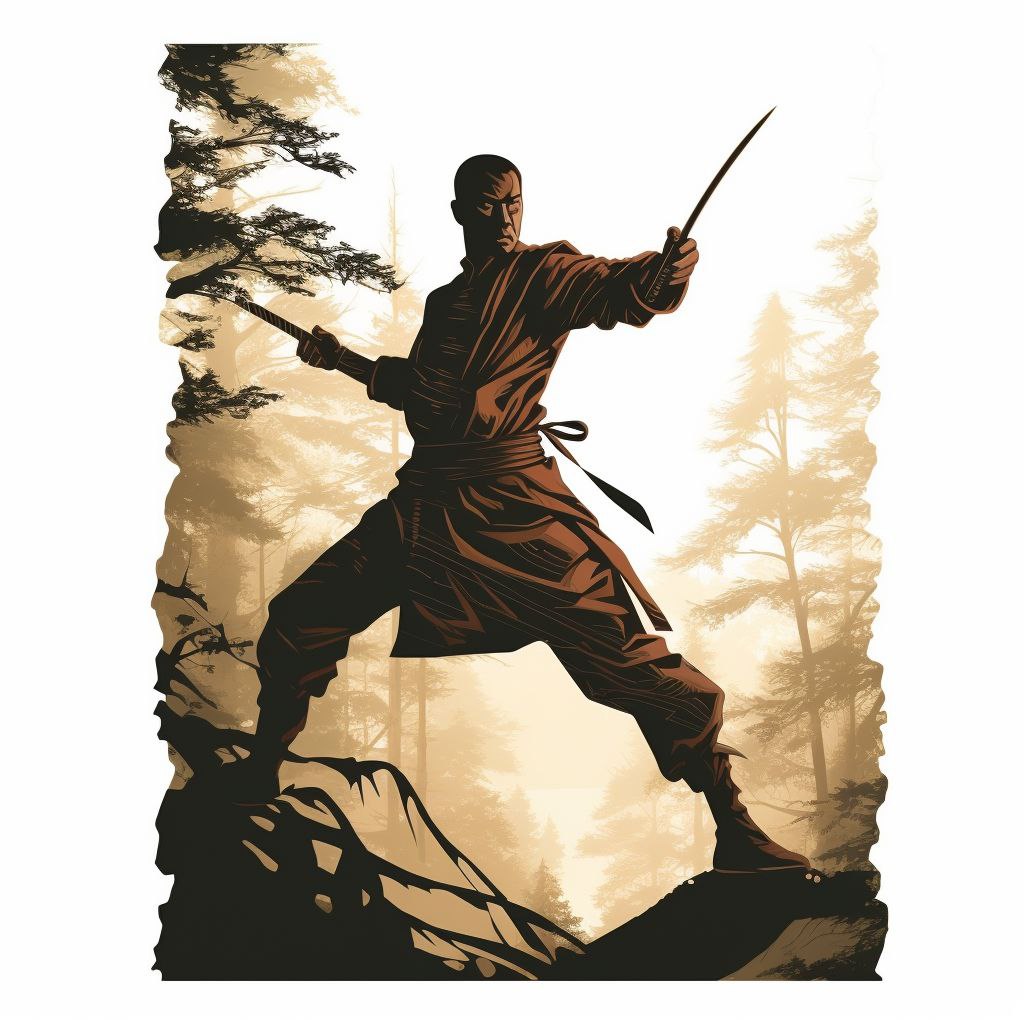
Wing Chun sisteminde üç çıplak el formu (Siu Nim Tao, Chum Kiu, Biu Tze), bir tahta adam formu (Mook Yan Jong) ve iki silah formu (Luk Dim Boon Kwan ve Bart Cham Do) öğretilir.
Formlar birbiri üzerine inşa edilir ama birbirlerinden bağımsız bir sıralamayla öğrenilir.
Formlar süslü ve gösterişli hareketlerden oluşmazlar. Wing Chun estetik kaygıdan ziyade tekniklerde etkinlik ve pratiklik üzerine yoğunlaşır.
Aynı zamanda formlar öğrencilerin uygulamalarda kullandıkları tekniklerin sağlamasını almalarını, sistemin formüllerini kavramalarını sağladığından büyük önem taşırlar.
Wing Chun'un Kazandırdıkları:
- Kendini savunma bilgisi (self defence)
- Özgüven
- İnsanları ve etrafını okuma, algılama
- Genel kondisyon ve kuvvet
- Esnek kas kuvveti ve refleksler
- Denge ve koordinasyon
- İç disiplin
- Stresten arınma ve moral & motivasyon kazanma
- Sağlık
- Tüm hayata yansıyan temel kavramlar
- Ömür boyu devam eden dostluklar
Wing Chun prensipleri ve konseptleri:
Wing Chun harekette ekonomi;
- Wing Chun, uygulayıcısı bir mücadele anında doğru zamanlamalı sadece birkaç hareketle etkili sonuç alabilmesi esası üzerine dizayn edilmiştir.
- En etkili savunma ard arda süregelen güçlü hücumları, en az sayıda hareketle bloklayan bir savunma sistemine sahiptir!
- Wing Chun uygulayıcısı aynı anda 3 farklı hareket koordinasyonunu uygulayarak eş zamanlı hareket eder.
"Kuvvet" ile baş etmekte Wing Chun dört prensibe sahiptir;
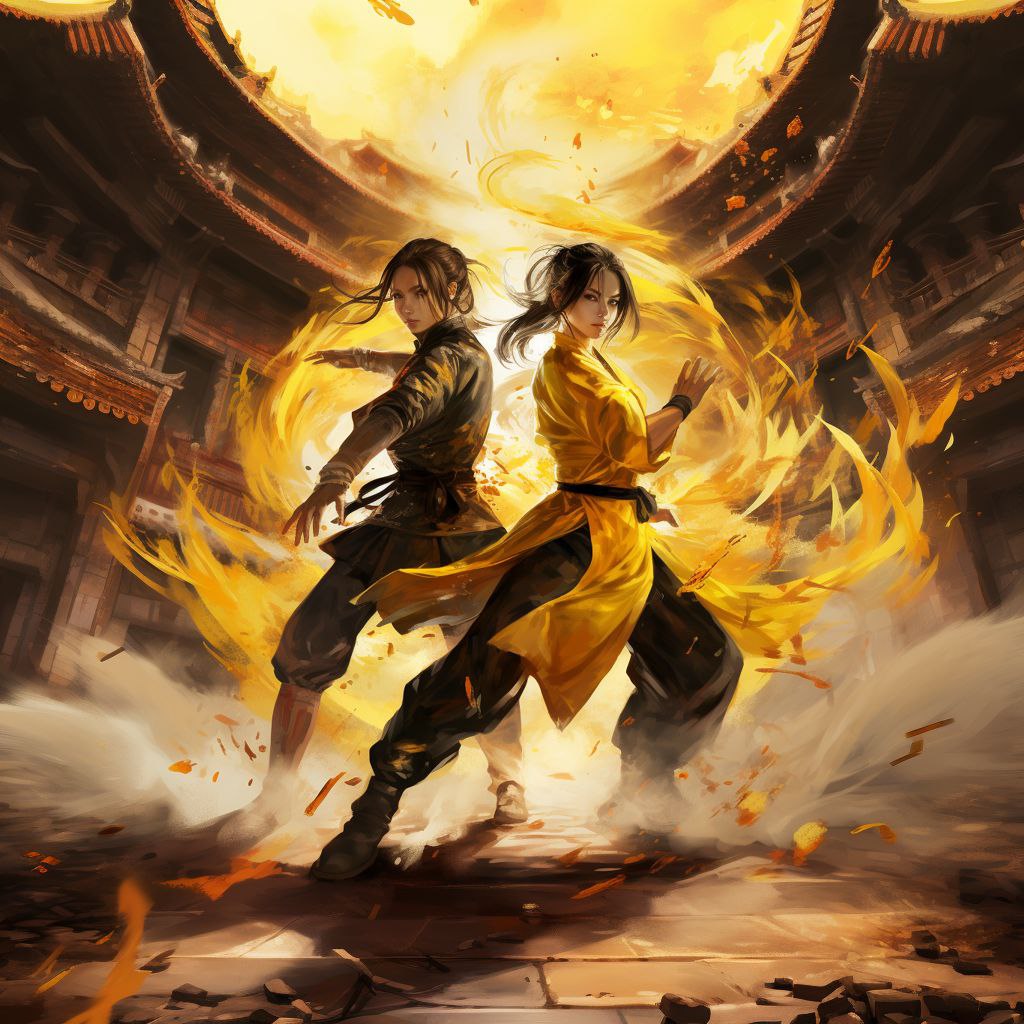
- Kendi kuvvetinizden arının.
- Rakibinizin kuvvetinden kurtulun
- Rakibinizin kuvvetini kullanın.
- Rakibinizin kuvvetine kendi kuvvetinizi ekleyin.
Disiplinli ve sıkı eğitim neticesinde Wing Chun uygulayıcıları kontrollü ve ölçülü bir yönlendirmeyle rakibin gücünü ''ödünç alıp'' ona karşı kullanmayı öğrenirler. Bu eğitim sonucu hücuma uğrayan uzuvlar otomatik olarak, anında ve rakibin gücüne kendi gücünü de katarak tepki verir hale gelir.
Wing Chun 4 temel prensibi:
- Önün boşsa ilerle!
- Eğer temas varsa yapış!
- İçeri gir!
- Rakip gerilerse takip et!
Wing Chun’u Üstün kılan Zincir yumruklar:
Bir Wing Chun dövüşçüsü ilk yumruktan sonra durmaz, beklemez. Sürekli zincir yumruklarla doğru zamanlamalı ve hedefe net vuruşlarla sonuca gider. Bu en etkili silahlarımızdan birisidir. Geleneksel savunma sanatları bu zincir yumrukları önleyemezler. Yumrukların hedefe dik ve net bir şekilde giderek çok kısa zaman aralıklarıyla birbirini takip etmesi rakibinin düşünme ve tepki verme şansını ortadan kaldırır ve çaresiz bırakır.
En önemli Wing Chun egzersiz bütünleri:
- 1. Chi-Sao (yapışan eller)
- 2. Lat-Sao (Wing Chun müsabaka eğitimi)
- Self Defence - 5 Mesafe
- Tekme ve karşılamalar mesafesi
- Yumruk ve karşılamalar mesafesi
- Diz&Dirsekler ve karşılamalar mesafesi
- Sarılma, tutma fırlatma ve karşılamalar mesafesi
- Yer dövüşü Mesafesi
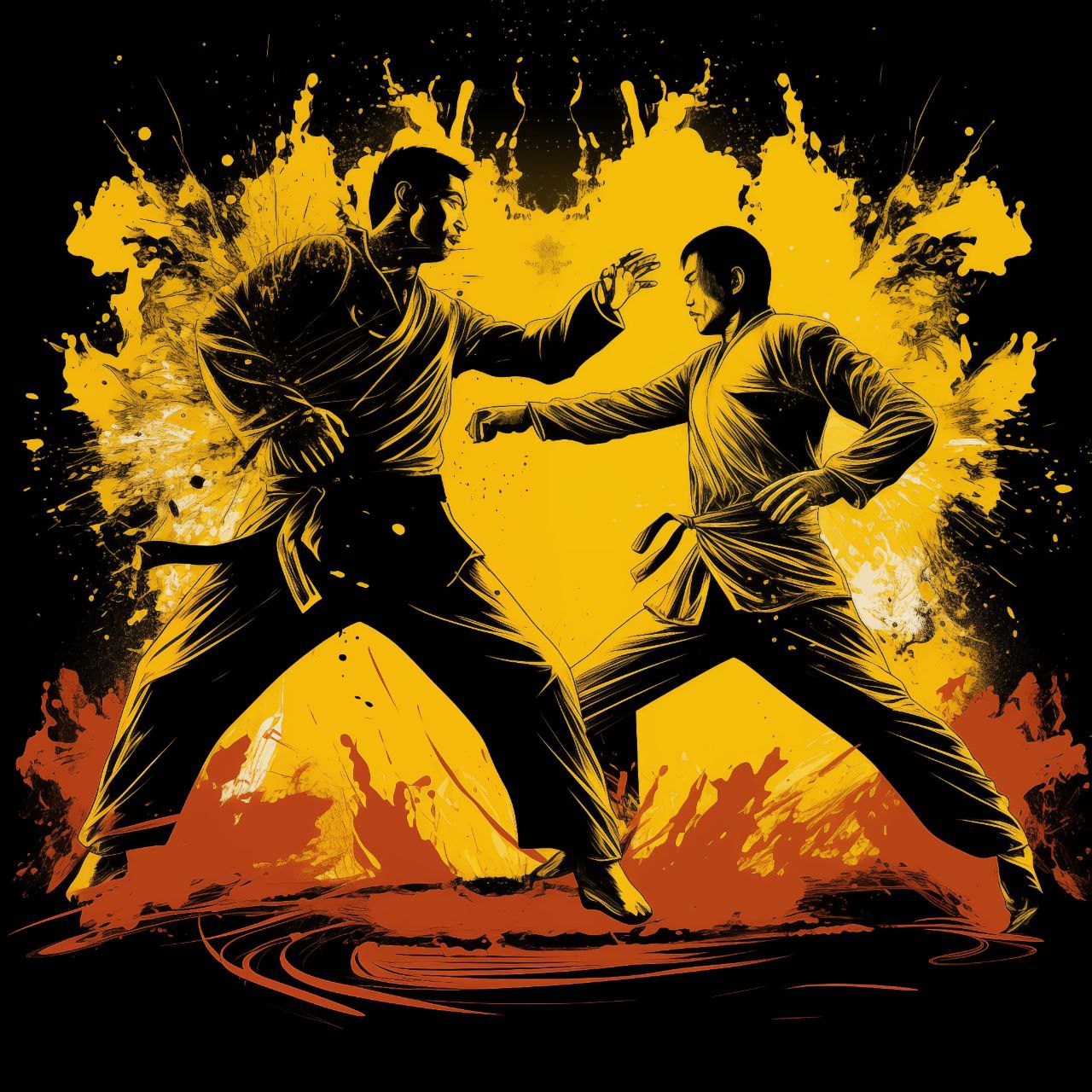
Wing Chun dokunma duyusuyla harekete geçen dokunsal reflekslerin geliştirilmesini amaçlayan benzersiz ve tek idman sistemi olan “Chi-Sao'ya” sahiptir.
“Chi-Sao” savunma refleksleri rakibin hücumuyla ani ve mekanik olarak harekete geçer.
Her duruma ve hücum şekline karşılık verecek şekilde dizayn edilmişlerdir.
“Chi-Sao” refleksleri görsel tepkilere göre çok daha çabuktur, ayrıca görüş olmaksızın savunma yapabilmeyi sağlar.
“Chi-Sao” bir dizi bağımsız hareketi gerekli durumlarda ahenkli kombinasyonlar halinde birleştiren yapıştırıcıdır.
Serbest “Chi-Sao” egzersizleri olmaksızın, Wing Chun bağımsız tek düze teknikler ve hareketsiz kurgulu, ezber bir sistem haline gelir. “Chi-Sao çalışmasını Wing Chun'un ruhu yapan şey budur!”
Wing Chun 'daki amaçlarımızdan birincisi kendimizi koruma yeteneğinin geliştirilmesidir. Lat-Sao ''serbest stil dövüş'' demektir. Lat-Sao çalışması Wing Chun öğrencisinin korkusuzca birebir müsabaka yapmayı öğrendiği bir egzersizdir. Çalışmalarının sonucunu ve kendi seviyesini görebileceği bir müsabaka türüdür.
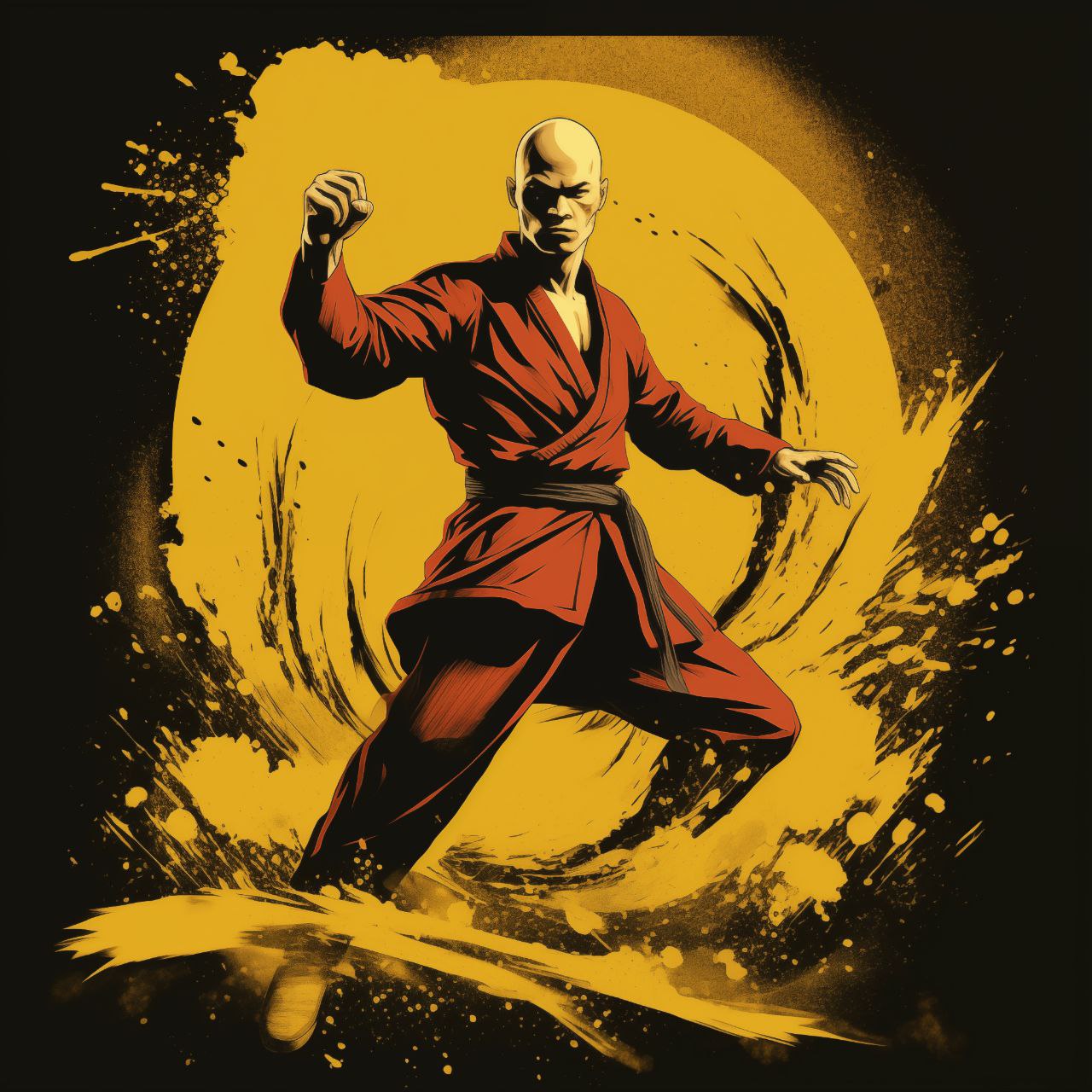
Kişisel savunma durumunda bizim için en avantajlı olan mesafeden, en dez avantajlı olduğumuz mesafeye kadar tüm mesafe yakın dövüş eğitimleri verilmektedir.
Tüm mesafeleri aktif ve gerçekçi bir şekilde kullanmayı biliyor olmamız bizim başka bir savunma sanatı(Silah mesafeleri olan Escrima hariç) öğrenme gerekliliğimizi ortadan kaldırır.
Tüm yakın dövüş mesafelerini kapsayan 5 mesafe şu şekildedir.
5 Mesafe:
,
Bir Wing Chun uygulayıcısı bu mesafeye çok hakim olması gerekmektedir. Çünkü mücadele halinde olduğumuz kişiye en uzakta ve en güvende olduğumuz mesafedir. Wing Chun uygulayıcısı bu mesafede yapılacak derin bong-geerk gibi agresif ayak blokları ya da tekmelerini kullanarak ekleme&vücuda güçlü vuruşlar&basışlar kullanarak mücadeleyi çok kısa sürede hasar almadan bitirebilir.
Farklı açılardan, farklı güç ve hızlarda gelen tüm vuruşları ya da tokat vb gibi tüm vuruşları bloklayabildiğimiz teknik ve güçlü bloklarımız mevcuttur. Ve bunların kontraları olarak zincir yumruk, çift yumruk, biu-tze gibi çok tehlikeli ve bloklanması zor vuruşlarımız mevcuttur.
Diz & Dirsekler savaş sanatlarındaki en etkili vuruşlardır. Kısa mesafede çok etkili knock out’la sonuçlandırılabilecek tek vuruşluk mücadeleler gerçekleştirile bilinir. O sebeple bir Wing Chun uygulayıcısı bu mesafedeki savunma ve saldırıları çok detaylı çalışmaktadır.
Yapılan mücadelelerin bir çoğu boğuşma, sarılma ve yere fırlatma şeklinde devam edebilmektedir. Yanlış mesafe ayarlaması, zamanlama hatası ve etkisiz vuruşlar vb gibi sebeplerle bu mesafeye geçilebilir. Mücadele anında psikolojik gerilim ve stres sebebiyle hata payımızın her zaman olabileceği bu gibi durumlarda bir çok savaş sanatında, “sarılma, kilitleme, boğuşma ve bu gibi durumlardan kurtulma” konseptli çalışmalar mevcuttur. Bir Wing Chun uygulayıcısı bu mesafe çalışmalarını başka bir savaş sanatı öğrenmeye gerek duymadan Wing Chun programları içinde fazlasıyla çalışmaktadır. Aşama aşama kilitleri ve kilitlendiği durumlardan kurtulmaları detaylı bir şekilde öğrenmektedir.
4.Mesafede olduğu gibi bir çok mücadele denge kaybından, zemin problemleri, taşa takılma, rakibin gücünü doğru yönlendirememe gibi hatalardan dolayı yerde devam edebilmektedir. Tabi son iki mesafe bir savaş sanatı uygulayıcısı için en istemediği mesafelerdir( Tabi salonda tatami ya da minderde arkadaşıyla antreman yapmıyorsa). Wing Chun hayatta kalma sanatı olma sebebiyle kapalı mekanda olduğu kadar açık mekanda da mücadele etmek zorunda kalabileceğimizi göz önünde bulundurmaktadır. Gerçekçi yaklaştığımızda bu mesafede kavgayı kazansak bile zemin sebebiyle ufak çaplı (belki de büyük) yaralar almamız olağandır. Tabi bu durum bu mesafeyi es geçmemiz için bir sebep olmadığı gibi aksine daha da ciddiye almamız gereken bir durumdur. Zeminin bile zarar verebildiği bir mücadele durumunda diğer dış etkenler ve rakibimiz (tecrübeliyse) daha da tehlikeli olacaktır. Bu sebeple bir Wing Chun uygulayıcısı her seviyede eş zamanlı yer dövüşü çalışmaları yapmaktadır. Ana konseptlerimizi bozmadan Wing Chun prensipleri içerisinde kendimize özgü donanımlı bir “Wing Chun yer dövüşü” programımız mevcuttur.
Kurucu Baş Antrenör
Dai Sifu Berat Uylukçu
ESCRIMA
Escrima
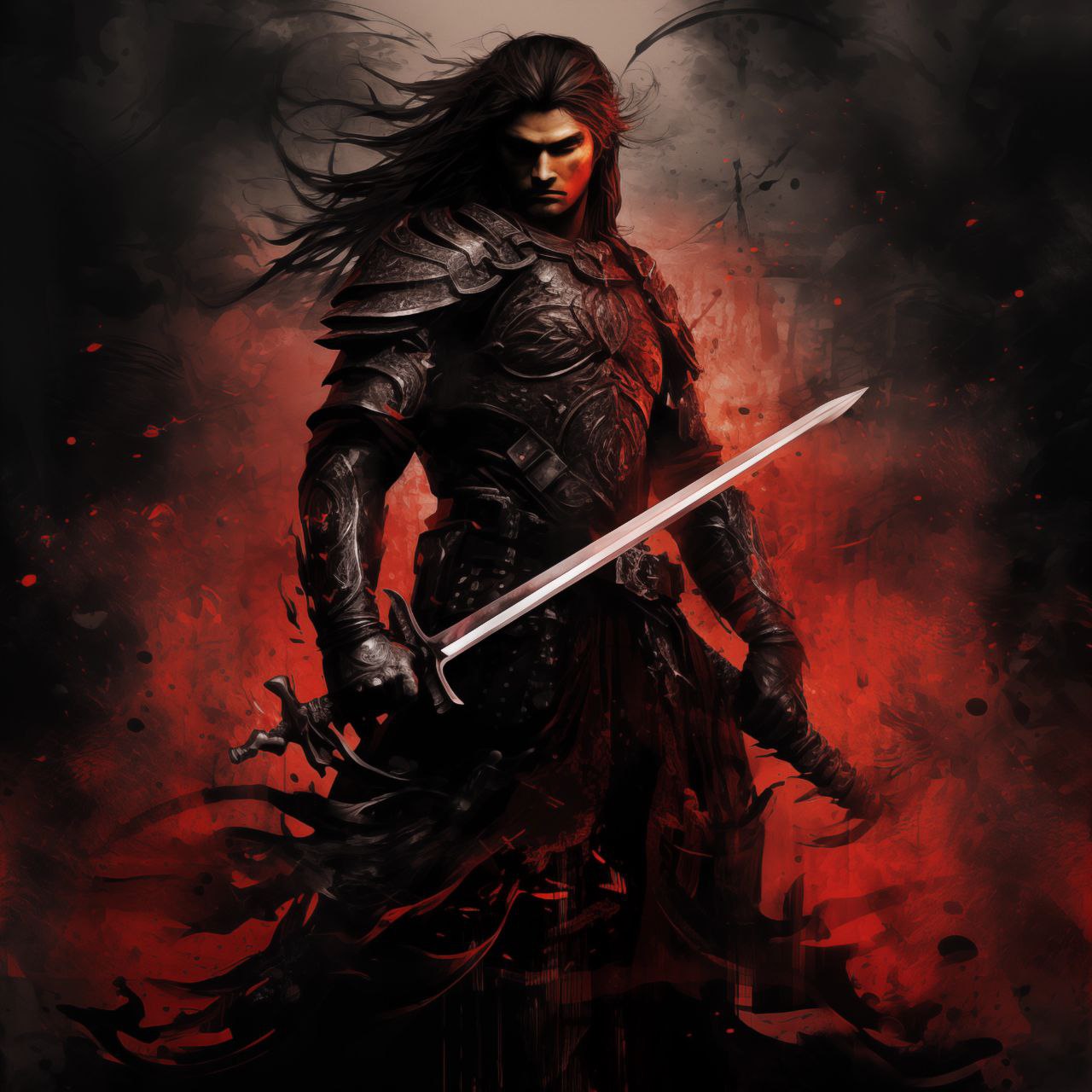
Escrima, tarihi savaşlarda kullanılmış Filipinler’in yarattığı silahlı bir savaş sanatı sistemidir.
Escrima tek bir silah üzerine yoğunlaşıp, sadece o silahın uzmanı olmayı öğretmez. Farklı seviyelerde farklı silah eğitimleriyle silahları birbirlerine karşı avantaj-dezavantaj, mesafe ve ağırlığına göre inceler ve bu bakış açısını kazandırır. Geleneksel ve modern silahlar ya da sayısız doğaçlama silahı “benzer prensipler ve konseptlerle” kullanmayı öğretir.
Escrima uygulayıcısı eğitiminin sonunda tam donanımlı bir savaşçı gibi tüm silahlarını kullanmaya başlar ve tüm silahları vücudunun bir uzvu gibi artık onunla birlikte yaşar.
Filipin Boksu
Filipin Boksu eğitimin 1.seviye temel çalışmalarında öğrenilen Escrima sanatının önemli bir parçasıdır. Başlangıç seviyesindeki bir kişinin vücut kontrolü, koordinasyonu, dengesi vb. temel escrima konseptlerini anlamasını sağlar.
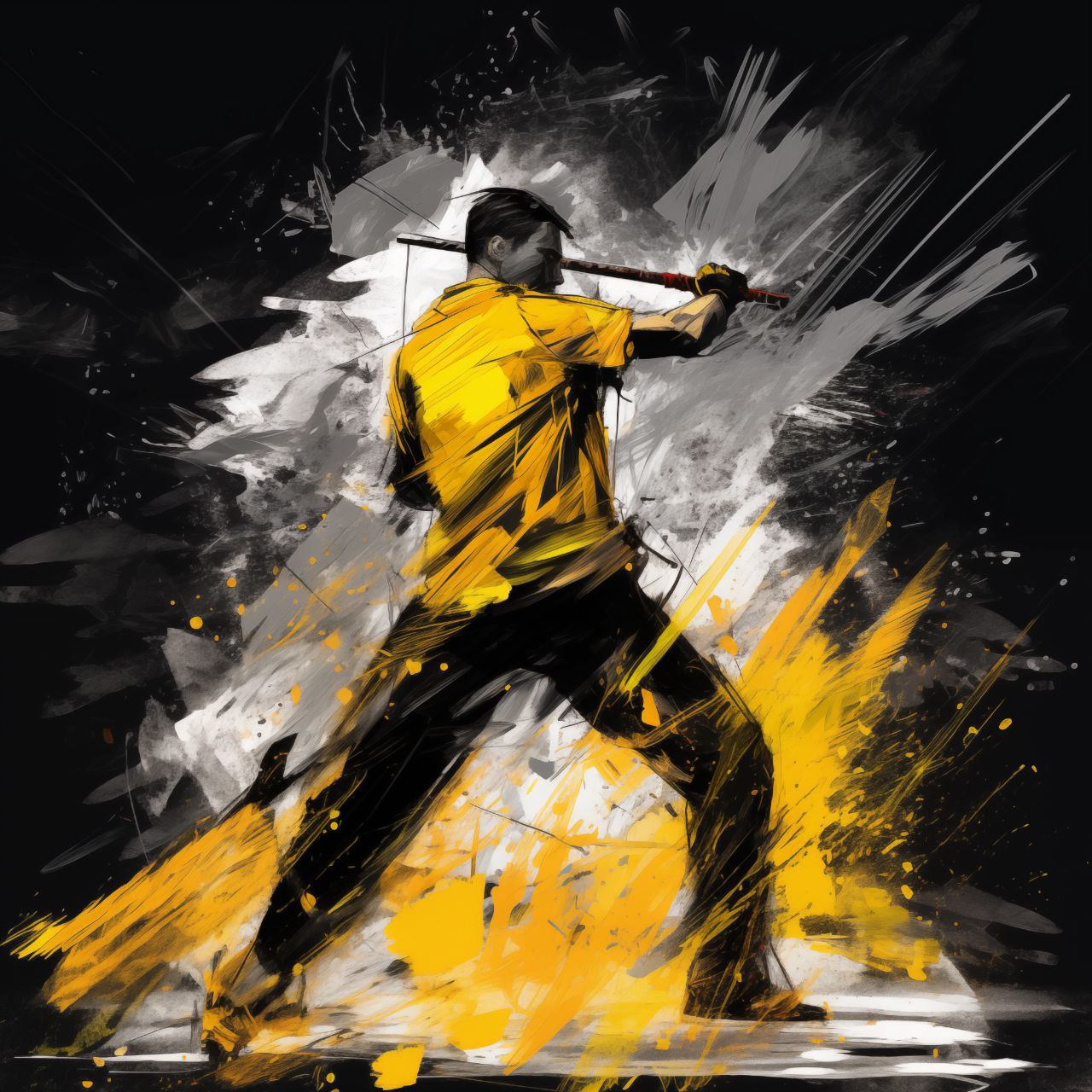
Tüm batı boksu vuruşlarının yanı sıra tekmeler, diz ve dirsekler kullanılır. Ayrıca silahla yapılan vuruşların çıplak ele geçişi olan çekiç yumruklar da Filipin Boksu içinde öğretilir.
Filipin Boksu bir bütün çıplak el sistemidir. Bazı temel çalışmalarda tüm ders silaha dokunmadan, sadece çıplak el çalışmaları ile geçebilir. Gölge boksu çalışmaları, karşılıklı sparring, focus pad ve kum torbası çalışmaları Filipin Boksu için önemlidir ve okullarımızda uygulanan çalışma şekillerindendir.
Escrima uygulayıcısı, Filipin boksunu başlangıç seviyesinde öğrendikten sonra tüm seviyelerde aynı teknikleri silahla da kombine etmeye başlayacak ve Filipin boksunun silahlı çalışmalara sağladıklarının farkına varacaktır.
Escrima Silah Seviyeleri
Seviye Palm-Stick ve Filipin Boksu Seviyesi:
Seviye Sopa ve Gladius Seviyesi:
Seviye Bıçak Farkındalığı ve Kısa Mesafe Hakimiyet Seviyesi:
Seviye Long Sword Largo Mano Seviyesi:
Seviye Kısa ve Uzun Balta Seviyesi:
Seviye Karambit ve Manevra Seviyesi:
Seviye Çift Galdius, Çift Balta Dosmanos Seviyesi:
Seviye Tonfa ve Süngü Seviyesi:
Seviye Kalkan + Gladius (ya da balta) Seviyesi:
Seviye Uzun Sopa ve Mızrak Seviyesi:
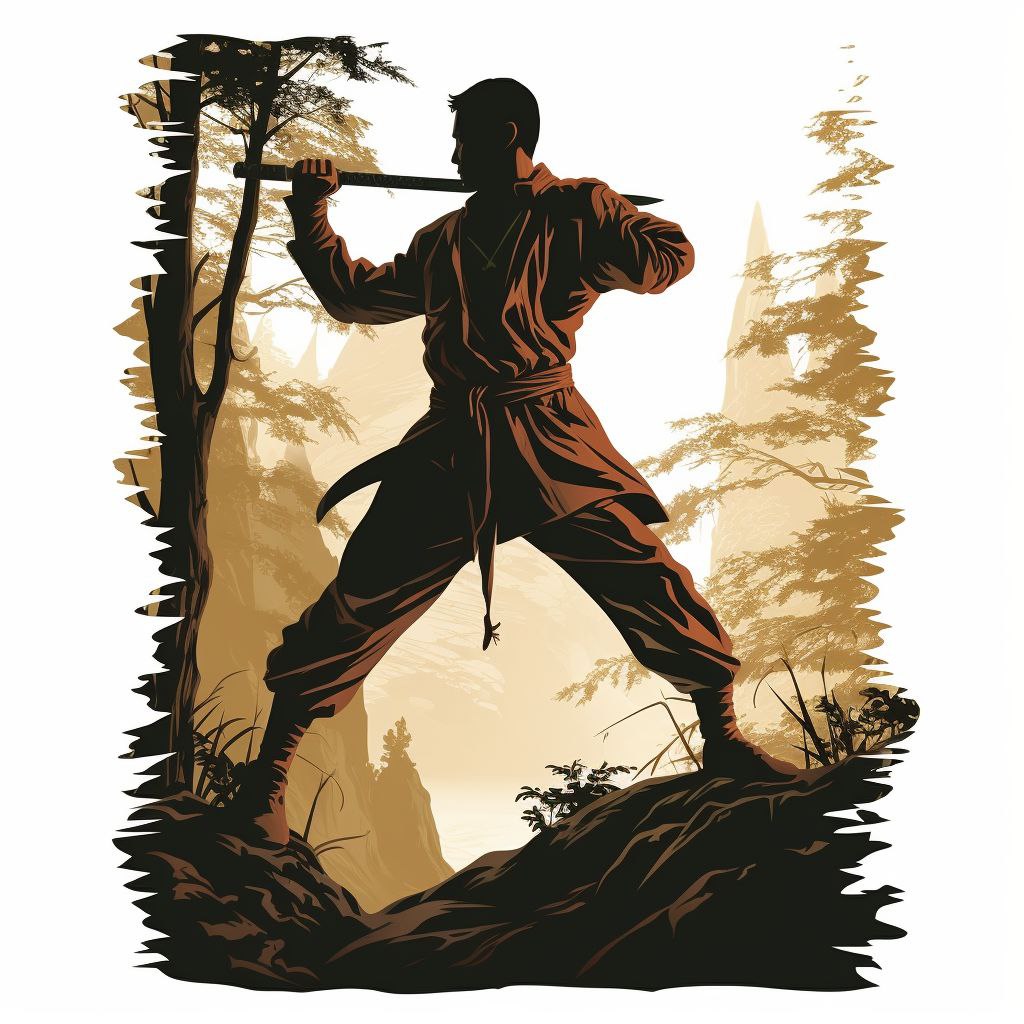
Başlangıç seviyesi olduğu için kullanımı en rahat ama bir o kadar etkili olan ilk silah “Palm-Stick’tir”.
Vücut farkındalığı, denge, koordinasyon, refleks, zamanlama, patlayıcılık vb. gibi temel prensipleri algılama açısından başlangıç seviyesinde “Filipin boksu” çalışmalarına da ağırlık verilmektedir.
Bu seviyede “Palm-Stick” ile ilk temel 7 vuruşu, farklı yönlere adımları ve farklı hedeflere odak çalışmalarını geliştiren Escrima uygulayıcısı, bu egzersizleri başlangıç seviyesinin ilerleyen aşamalarında herhangi bir saldırıya karşı temel savunma teknikleriyle birleştirir.
Aynı zamanda “Filipin Boksu” çalışmalarını bu seviyede öğrenen Escrima uygulayıcısı seviye sonunda “Palm-Stick” egzersizleriyle birlikte dengeli bir dağılımla uygulama çalışmaları yapmaktadır.
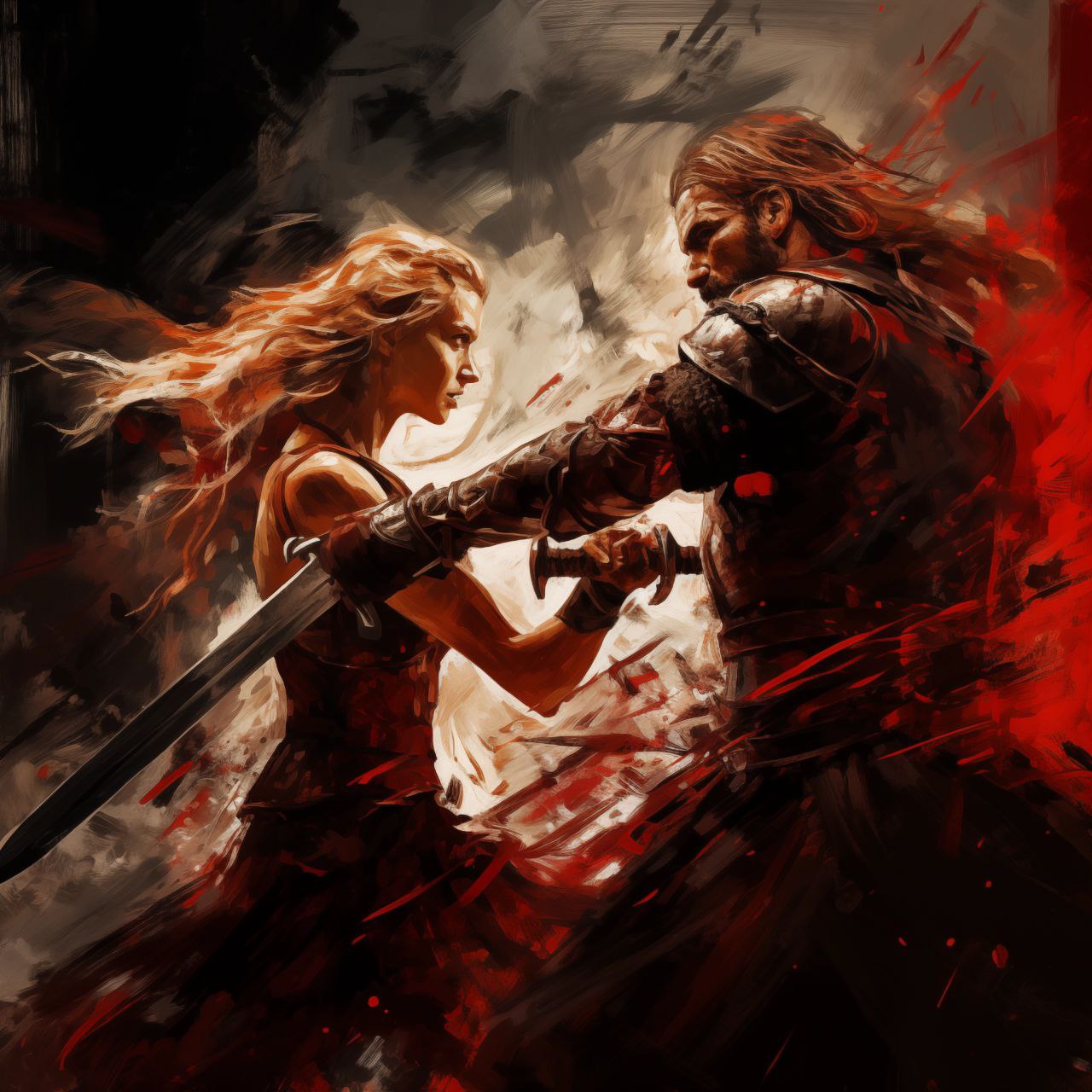
Temel eğitimi almış bir Escrima uygulayıcısı bu seviyede öncelikli 70 cm düz bir “sopa” ile temel 7 vuruşu, farklı yönlere adımları tekrar edip yeni silahına adaptasyonu sağlamaktadır.
İlerleyen aşamalarda herhangi bir silahla gelen saldırılara karşı blokları “sopası” ile karşılamaktadır ve arkasından kontra atak çalışmaları yapmaktadır.
“Sopa” da hakimiyetini arttıran Escrima uygulayıcısı “Gladius(Roma Kısa kılıç)” çalışmalarına başlamaktadır.
“Gladius’un” kesici ve delici özelliğinin algılandığı bir aşama, “sopa” ile yapılan vuruşlara çok yakın ama “Gladius’un” keskinliğinin öne çıkarıldığı bir seviyedir.
Sliding blok gibi derin bloklarla ve kontra ataklarıyla seviye desteklenmektedir.
“Gladius’un” delici ve kesici özelliğini bu seviyede daha yakın mesafe kullanmaya başlayan Escrima uygulayıcısı aynı zamanda bu seviyede “J cutlarla” ve boğuşma, sarılma, kollardan tutma, karşılıklı yakın mesafe mücadele gibi durumlara karşı kısa mesafede bıçak kullanma eğitimini alır.
(Bu seviye asker ya da özel harekat personelleri vb. meslek gruplarına öğretilmektedir)
“Largo Mano” silahların mesafe avantajını arttırmak için kullanılan bir mesafe geçiş konseptidir.
“Long Sword (Uzun kılıç)” çalışmaları önceki seviyelere göre (3 boyut yani yükseklik, en ve mesafe olarak) daha büyük, geniş bir alan kaplayarak ve kapatarak rakibe ilerleyen güçlü vuruşlardan oluşur.
“Long Sword’un” ağırlığı sebebiyle çift el tutuşuyla, güçlü dönüşlerle ve gücü hızı arttırmak için “Aboniko(yelpaze)” dediğimiz tekniklerle mesafe kat ederek hedefe ulaşır.
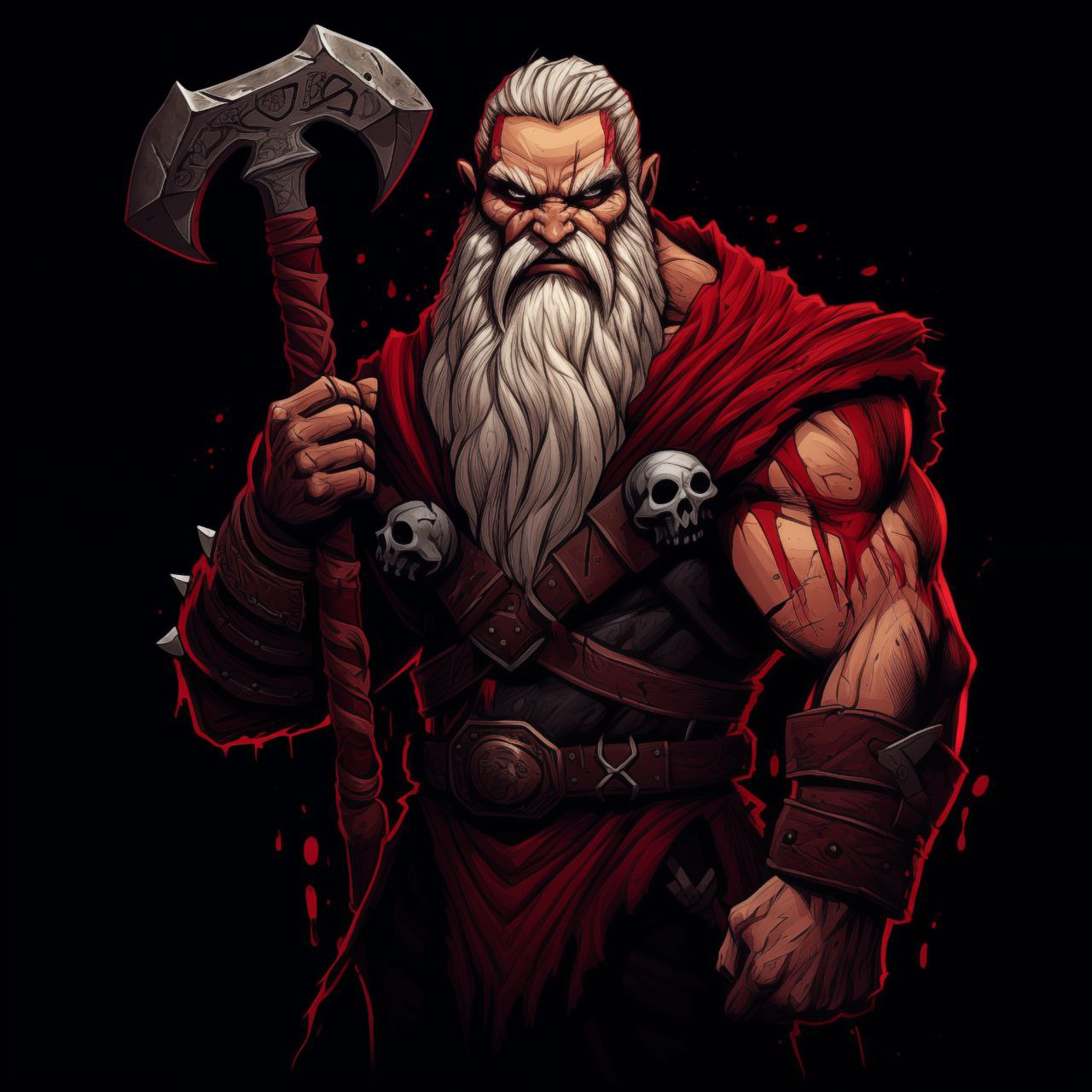
Bu seviyede Escrima uygulayıcısı “kısa balta” çalışmalarıyla başlamaktadır.
“Gladius” temel vuruşlarına benzer ama “kısa baltanın” ağırlık merkezi sebebiyle farklılık gösteren bir çalışma konseptine sahiptir.
Kısa mesafede seri vuruşlar ve geçişlerin daha çok kullanıldığı “kısa balta” uzmanlaştığınızda durdurulamaz hale gelir.
“Kısa balta” çalışmaları oturduktan sonra daha ağır olan bir silah “uzun balta” çalışmaları “largo mano” çalışmalarıyla benzer bir şekilde ilerlemektedir.
“Long Sword’a” göre ağırlık merkezi farklılık gösterdiği için daha güçlü, momentumu yüksek vuruşlar gerçekleştirilebilir. Kontrolü zor bir silahtır ama disiplinli bir çalışmayla mükemmel kontrole ve kullanıma ulaşıp durdurulamaz hale getirilebilir.
“Karambit” seviyesinde silahınızın kullanımı, hızlı geçişleri ve görünmez hale gelmesi çok önemlidir.
Rakip henüz elinizdeki silahı fark edemeden hamleler yapabildiğiniz bir seviyedir.
Bu seviyede en önemli savunma prensibi; rakibi “eskiv”, “fent”, “passing hands” ve “offline adımlarla” sürekli boşa çıkarmaktır ve kontra olarak açılan boşluklarda kısa ve seri kesişler yapmaktır.
Rakiple hiç bir güç mücadelesi yoktur.
(Bu seviye asker ya da özel harekat personelleri vb meslek gruplarına öğretilmektedir)
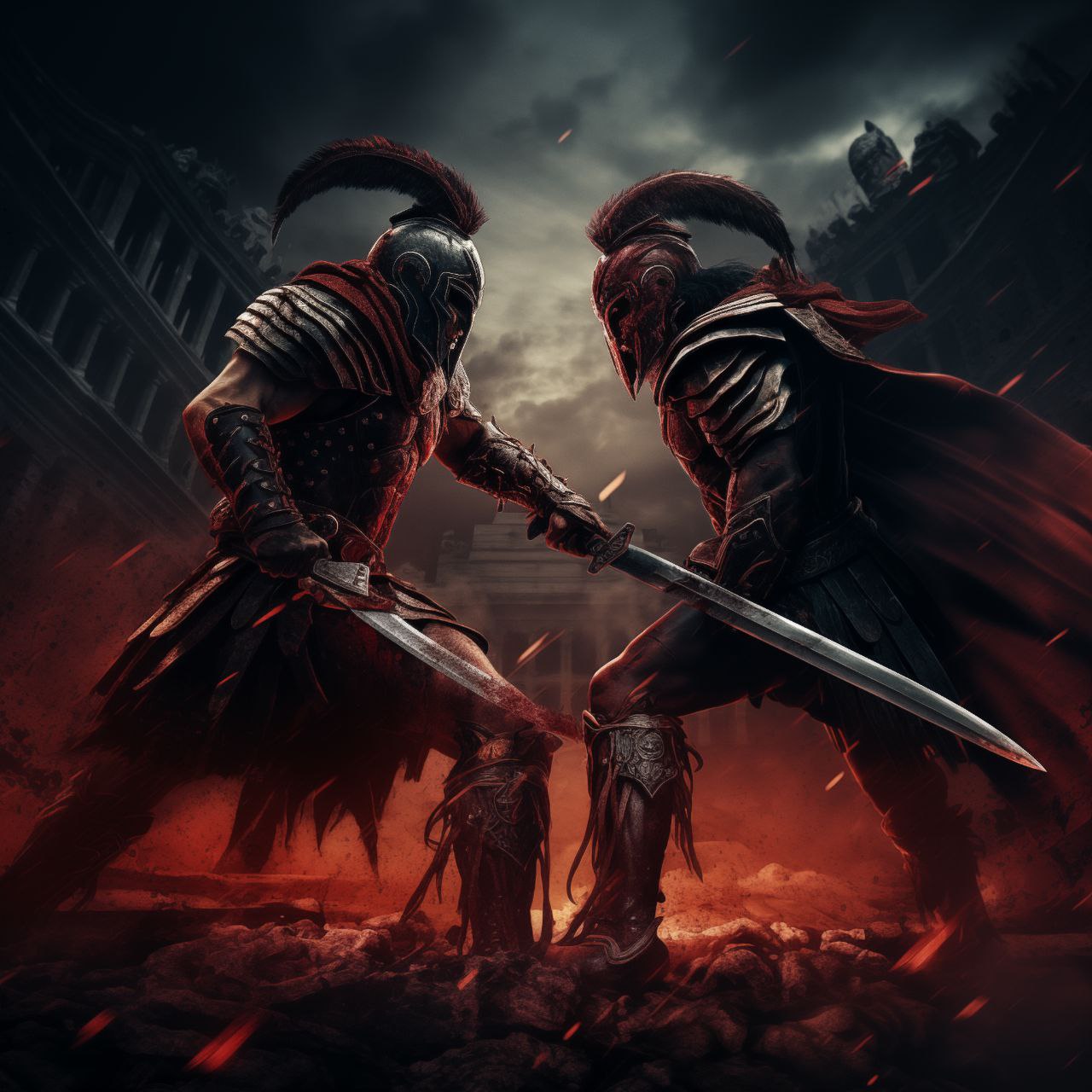
Daha önceki seviyelerde “Gladius” ya da “kısa balta” silahları sağ veya sol elde olmak üzere yapılan çalışmaları bu seviyede birleştirip çift elle çalışma egzersizleriyle koordinasyonu sağlanır.
“Dos Manos(çift el)” konsepti diğer silahlara da uyarlanabilen bir çift el konsept seviyesidir. (Örneğin “çift bıçak”, “çift karambit” ya da iki elde farklı mesafe silahları gibi).
Önceki seviyelere farklılık gösterdiği noktalardan en önemlileri eşit zaman prensipleri, seri hızlanarak zincir halde gelebilen vuruşlar, çift güçlü bloklardır.
“Tonfa”, “Amerikan Jopu” ismiyle de bilinmektedir. Biçimi ve kullanımı sebebiyle “süngü” ve “tonfa” kullanımına çok yakındır.
O sebeple çalışmalarda “Tonfa” ile bloklar ve saldırılar öğrenildikten sonra “süngü” kullanımına uyarlanır.
(Bu seviye asker ya da özel harekat personelleri vb. meslek gruplarına öğretilmektedir)
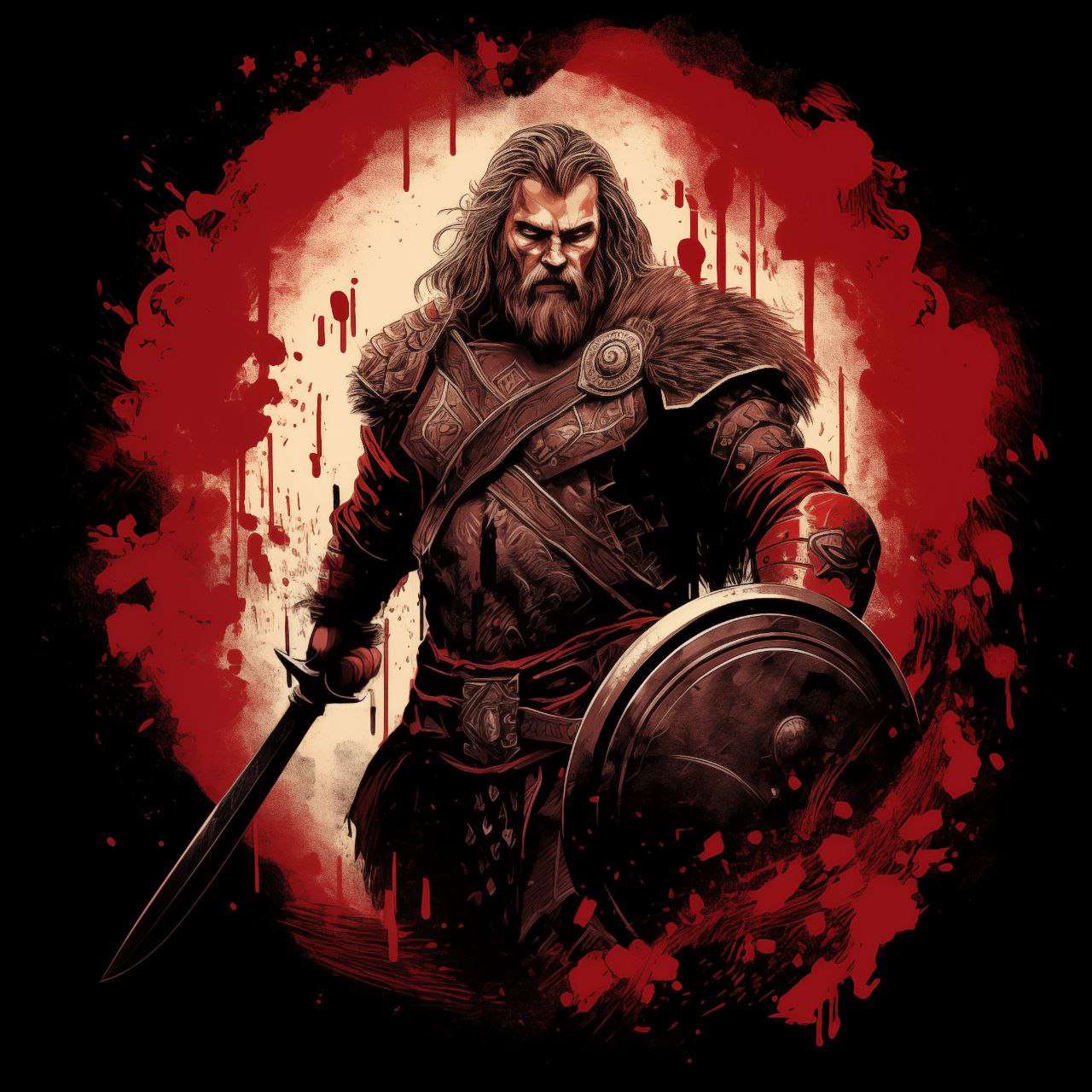
“Kalkan” geleneksel bir savunma silahı olsa da günümüzdeki herhangi bir objeye(örneğin bıçaklanmaya karşı sırt çantası gibi) uyarlanabilmektedir.
Aynı zamanda savunma gibi düşünülse de bir Escrima uygulayıcısı kalkanla vuruşları ve itişleri fazlasıyla kullanmaktadır. Aynı zamanda diğer elinde bulunan “Gladius” ya da “kısa balta” da ağırlıklı saldırı silahı olarak kullanılsa da blok olarak da kullanılabilmektedir.
Bu seviye “Dos Manos(çift el)” seviyesi gibi çift eli hatta tüm vücudu bütün halinde çok aktif kullanan, gözükenin aksine kalkanın durağan olmadığı bir seviyedir.
Escrima uygulayıcısı “Uzun sopa” ve “Mızrak” seviyesinde 3 farklı gard kullanmaktadır. Alanı çok geniş ve rakibi en uzakta tutarak kullanılabilen, uzun mesafe etkili vuruşlar gerçekleştirebilen Escrima uygulayıcısı, mesafe avantajının ne kadar önemli olduğunu algıladığı önemli bir seviyedir.
10 seviyeyi öğrenmiş bir Escrima Uygulayıcısı ilerleyen seviyelerde öğrendiği konseptlerde ve silahlarda uzmanlaşmak için farklı silahlarla çok fazla müsabaka yaparak kendini geliştirmeye, ustalaşmaya devam etmektedir. “Unutulmaması gereken, savaş sanatları bitmeyen uzun bir yolculuktur.”
Kurucu Baş Antrenör
Dai Sifu Berat Uylukçu
FONKSİYONEL ANTRENMAN

Birçok spor branşında olduğu gibi günümüz spor anlayışında değişimler yaşanmaktadır ve yeni rekorlar kırılmaktadır. Bundan 30 yıl önce oluşan sportif istatistiklerin neredeyse iki katı istatistiklere ulaşan sporcular yetişmektedir ve eski rekorları alt üst etmektedir. Bu gelişimin sırrını antrenörler fiziksel güçlenme ve bu fiziksel gücü teknikle birleştirmekte bulmuşlardır ve kendi uzmanı oldukları branşları modernleştirmişlerdir. Örneğin Modern Futbol anlayışı gibi fiziksel gücü artan atlet sporcuların kanat futbolunda çok daha başarılı olması gibi.
Organizasyonumuzun kurucusu Dai Sifu Berat Uylukçu uzman olduğu Wing Chun ve Escrima branşlarına da benzer bir bakış açısı getirerek, yetiştirdiği sporcuların fiziksel gücünü arttırmak ve bunu teknikle birleştirmek amacıyla Fonksiyonel Antrenman alanında uzman olan eğitmenlerle çalışarak Fonksiyonel çalışmalar geliştirmektedir.

Magnolia Kung-Fu Style’da Wing Chun ve Escrima öğrenen sporcularımız bu savaş sanatlarına uygun tasarlanmış Fonksiyonel Çalışmalarla (Hız, Hızlanma, Dinamik ve statik güç, denge, geçişler ve güçlenmesi gibi) desteklenmektedir.
Bu çalışmalarda kendini geliştiren bir sporcu Wing Chun ve Escrima çalışmalarında da ciddi derecede değişim göstermektedir. Magnolia Kung-Fu Style Wing Chun ve Escrima’nın geleneksel yapısını bozmadan Fonksiyonel çalışmalarla modern hale getirmektedir ve en iyi Wing Chun & Escrima Ustalarını ve sporcularını yetiştirmeyi hedeflemektedir.
Fonksiyonel Antrenmanın bir etkisi de sağlıklı bir şekilde kilo vermek ve kilo almak isteyen, daha fit bir vücuda sahip olmak isteyen, daha sağlıklı olmak isteyen öğrenci ve öğrenci adaylarımızın başka bir branş (fitness, crossfit gibi) yapmak zorunda kalmadan zaman içerisinde ortalama atletik bir fiziğe sahip olmasını sağlamaktadır.
GENERAL CONTENT ARTICLE MAGNOLIA KUNG-FU STYLE's MISSION AND APPROACH
Magnolia Kung-Fu Style was founded on July 23, 2023, by Dai-Sifu Berat Uylukçu. The organization's mission is to bring together numerous martial arts enthusiasts, sports lovers, those aspiring for a healthy lifestyle, individuals aiming for enhanced athleticism and agility, and those who share similar interests. The goal is to provide a platform where these individuals can gather under one roof, fostering social interactions and enabling peaceful and harmonious sports activities.
Magnolia Kung-Fu Style encompasses the disciplines of Wing Chun, Escrima, and Functional Training that complements these two martial arts. Within our organization, our athletes receive close combat training in the Wing Chun art, originating from Southern China, and they also receive instruction in Escrima, rooted in the Philippines and encompassing training for both historical and contemporary weaponry. As our athletes learn these martial arts, they are further supported by Functional Training tailored to Wing Chun and Escrima principles, aiming to enhance their speed, strength, balance, and other relevant attributes.
With 22 years of experience, our organization's founder has reimagined and merged the concepts of Wing Chun and Escrima, while preserving their unique essence, into a single progression path. Every student who starts their training with our organization learns the Wing Chun-Escrima concepts and the supportive Functional Training programs simultaneously, without separating them. Dai Sifu Berat Uylukçu has developed a curriculum that highlights the interdependence of these three disciplines and created a teaching system accordingly.
In this system, one-third of the duration of all three lessons is allocated to Functional Training, and one-third of the lessons are dedicated to Escrima. This structure applies to our camps and seminars as well. As a result, every athlete within the Magnolia Kung-Fu Style community hones their skills and gradually masters these three disciplines over time.
In Magnolia Kung-Fu Style, there are 10 Student Levels, 4 Technician Grade (TG) Levels, and 5th & 6th Practitioner Grade (PG) Levels that include the final weapon forms of the Wing Chun curriculum. Within the first 10 student levels, the training covers the initial two forms of Wing Chun style, comprehensive Nuk-Sao, Lat-Sao, and Chi-Sao programs, Anti Grappling & Ground Fighting programs, sparring sessions at the end of each level, weapon disarming programs, multiple attack programs, and Escrima programs for traditional and contemporary weapons proficiency.Following the completion of this comprehensive foundational level training, the TG and PG programs focus on mastery and increasing experience. In the Escrima branch, the repetition and mastery of all weapon techniques learned at the 10th level are carried out during the TG and PG levels.
In the Escrima branch, the taught weapons and level progression are as follows: 1st Level: Palm Stick and Filipino Boxing 2nd Level: Stick and Gladius 3rd Level: Knife Awareness and Close-Range Combat 4th Level: Long Sword - Largo Mano Distance Concept 5th Level: Short Axe and Long Axe Usage 6th Level: Karambit Usage 7th Level: Double Swords, Double Axe - Dos Manos Level 8th level: Tonfa and Spear Usage 9th Level: Sword and Shield, Axe and Shield Usage 10th Level: Long Staff and Spear Usage After completing these levels, mastery stages begin with reinforcement through revision and practice. The focus then shifts to enhancing experience by increasing sparring frequency with different weapons and distances.
The Functional Training programs are determined by our instructors based on the class's physical needs. For instance, ready-made programs such as explosiveness and acceleration can be consecutively conducted for 2-3 lessons in a row for a class that needs to enhance its speed.
In essence, our goal at Magnolia Kung-Fu Style is to modernize training methods, as seen in many contemporary sports disciplines, while simultaneously preserving our traditional practices handed down by our masters. We aim to cultivate the finest Martial Arts Masters, imparting these traditions to our students, and to develop physically strong, athletic, and healthy-looking athletes. Our aim is to reach individuals who possess the potential and drive to excel in this direction.
WING CHUN
What is WingChun?
WingChun is a direct, simple and effective Martial arts system. It is one the of Kung-fu Styles originated about 300 years ago in Southern China. Wingchun was developed by a Budist Nun named NG Mui and it was named after Yim Wingchun, the first student and developer of the system, who was also a woman.
It is said that Ng Mui was inspired by the fighting of the crane bird and the fox while developing the WingChun style. This fight helped NG Mui's already existing ideas to evolve. Imitation of animal movements is very common in Chinese martial arts. However, WingChun is entirely designed to suit the human body and does not incorporate techniques that would be unnatural for the human body.

Wing Chun is built upon some important principles; Simultaneous attack and counter attack, center line, economy in action etc.
It is a self-defense system against potential threats. However, this does not mean that we won't make the first move if a situation poses an immediate response to a danger or threat. WingChun is an effective counter-attack system.
The philosophy of WingChun always encourages avoiding danger, violence, and fighting.For situations where avoiding a fight is impossible, it provides the necessary skills and a realistic perspective.
A WingChun practitioner learns how to effectively use punches, kicks, knee strikes, and elbow strikes at different distances and how to defend against them. In doing so, the foundational elements of the system such as balance, timing, distance, explosiveness, coordination, and more are practiced. They learn how to use all of these in various situations with specific strategies and tactics.
WingChun is a system that people of all ages and body types can easily learn. Against pure strength and speed, WingChun responds with a well-constructed foundation and timing.
Forms:

There are 3 empty hand forms, (Siu Nim Tao, Chum kiu, Biu Tze), a Wooden Dummy form (Mook yaan Jong) and two Weapon forms (Luk dim boon Kwan, Bart Cham do) in WingChun system.
These forms are built on top of each form and taught in independent sequence.
There are no fancy or acrobatic movements in WingChun forms.
WingChun focuses on effectiveness and practicality in techniques rather than aesthetic concerns.
Physical and mental benefits of WingChun:
- Self Defense knowledge
- Self Confidence
- Awareness (perceiving the people and surroundings)
- Gaining Condition & Strenght
- Flexiblity in muscle strength and reflexes
- Balance and Coordination
- Inner discipline
- Stress relief and gaining Motivation
- Health
- Lifelong Friendships
WingChun principles and Concepts:
Economy of motion in WingChun:
- WingChun is designed around the principle that its practitioner can achieve effective results with correct timing and only a few movements in a combat situation.
- The most effective defense is a defense system that blocks consecutive strong attacks with the least number of movements!
- A WingChun practitioner moves simultaneously by coordinating 3 different movements at the same time."
In dealing with 'Force', WingChun adheres to four principles:

- Give up your own force
- Redirect your opponent's force
- Use your opponent's force
- Add your own force to your opponent's.
As a result of this training, limbs under attack automatically respond instantly and incorporate their own strength with the opponent's strength.
Four main principles of WingChun:
- Always go forward if the way is clear
- Stick to what comes
- Yield to a greater force
- If the opponent retreats, fill the gaps and follow.
What makes WingChun Superior - Chain Punches:
A WingChun fighter doesn't stop or wait after the first punch. They continuously use chain punches, aiming for the right timing and delivering precise strikes to reach the outcome. This is one of our most effective weapons. Traditional martial arts cannot defend against these chain punches. The punches going straight and accurately to the target, following each other in rapid succession, eliminate the opponent's chance to think and react, leaving them helpless.
The most important WingChun Training Components:
- 1. Chi-Sao (Sticking hands)
- 2. Lat-Sao (WingChun competition training)
- Self Defense - 5 Distances
- Kicking and Intercepting Distance
- Punching and Intercepting Distance
- Knee & Elbow and Intercepting Distance
- Grappling, Holding, Throwing, and Counter-Fighting Distance
- Ground Fighting Distance

WingChun has a unique and singular training system called "Chi-Sao," which aims to develop tactile reflexes triggered by the sense of touch.
"Chi-Sao" engages defense reflexes in response to the opponent's attack, with quick and mechanical reactions.
It is designed to respond to various situations and attack forms. The reflexes in "Chi-Sao" are much quicker than visual reactions and allow for defense even without sight.
"Chi-Sao" acts as a glue, combining a series of independent movements into harmonious combinations as needed. Without free "Chi-Sao" exercises,
WingChun can become a memorized system of isolated techniques and static structures. “This is what makes Chi-Sao practice the essence of WingChun!”
One of our main goals in WingChun is to develop the ability to defend ourselves. Lat-Sao means "free-style fighting." Lat-Sao training is an exercise through which WingChun students learn to engage in one-on-one sparring fearlessly. It's a form of practice where students can gauge their progress and skill level.

In personal defense scenarios, WingChun provides training across all distances, from the most advantageous distance for us to the least advantageous.
Having the ability to actively and realistically use all distances eliminates the need to learn another martial art (except for arts that focus on weapon distances like Escrima).
The 5 distances that encompass all close combat ranges are as follows.
5 Distances:
,
A WingChun practitioner must be highly proficient in this distance because it is the furthest distance from the opponent and offers a greater sense of safety during combat. In this range, a WingChun practitioner can use aggressive leg blocks or kicks like "derin bong-geerk" to intercept attacks effectively. They can also employ powerful strikes and pushes to quickly end the fight without sustaining much damage.
At this distance, we can effectively block various strikes, punches, or slaps coming from different angles, with different power and speed. WingChun provides us with technical and powerful blocks to defend against these attacks. Additionally, we have counter-attacks such as chain punches, double punches, and biu-tze strikes that are highly dangerous and difficult to block.In this range, WingChun practitioners focus on fast and precise movements to intercept and counter the opponent's attacks swiftly and decisively. Mastery of this distance is crucial for effective close-quarters combat and self-defense.
Knee and elbow strikes are some of the most effective techniques in martial arts. They can lead to devastating knockouts when applied with precision and power at close range. WingChun practitioners extensively train their defense and attack techniques at this distance due to the potential for one-strike fight-enders.In this range, practitioners focus on perfecting their timing, accuracy, and understanding of body mechanics to deliver powerful knee and elbow strikes while effectively defending against similar attacks from the opponent. The ability to skillfully engage in combat at this distance can be a decisive advantage in self-defense situations.
Many of the fights can continue in the form of grappling, holding, and throwing to the ground. Incorrect distance adjustment, timing errors, and ineffective strikes, etc., can lead to this distance. Due to psychological tension and stress during the fight, our margin for error is always present in such situations. That's why in many martial arts, there are practices focusing on concepts like "grappling, locking, wrestling, and escaping" in these situations. A WingChun practitioner works extensively on these distance techniques within the WingChun programs without needing to learn another martial art. They learn locks and how to escape from them in detail, step by step.
Similar to the fourth distance, many fights can continue on the ground due to balance loss, ground-related issues, stumbling over obstacles, or inability to redirect the opponent's force correctly. Of course, the last two distances are the least desired for a martial arts practitioner (unless they are practicing with a friend on a mat or tatami). WingChun, being an art of survival, takes into consideration that we may have to fight not only in closed spaces but also in open areas.When we approach realistically, even if we win the fight at this distance, it is normal to sustain minor (or even major) injuries due to the ground. However, this does not mean we should ignore this distance; on the contrary, it is a situation that we should take even more seriously. In a combat situation where the ground itself can cause harm, other external factors and our opponent (especially if they are experienced) will be even more dangerous. That's why a WingChun practitioner works on ground fighting at every level simultaneously. We have a specialized "WingChun ground fighting" program within the Wing Chun principles, preserving our main concepts.
Founder Head Coach
Dai Sifu Berat Uylukçu
ESCRIMA
Escrima

Escrima is an weapon-based martial art system created by the Philippines and used in historical battles.
Escrima doesn't solely focus on a single weapon and doesn't teach becoming an expert in just that one weapon. Through different levels and diverse weapon training, Escrima examines weapons against each other in terms of advantages-disadvantages, distance, and weight, providing practitioners with a comprehensive perspective. It imparts the ability to use various weapons, including traditional and modern ones, as well as numerous improvised weapons, with "similar principles and concepts.
At the end of the practitioner's training, an Escrima practitioner starts using all their weapons like a fully equipped warrior and all the weapons become a part of their body, living with them as an extension of themselves.
Filipino Boxing
Filipino Boxing is an essential component of the first-level basic training in the Escrima. It enables an individual at the beginner's level to understand fundamental Escrima concepts such as body control, coordination, balance, and more.

In addition to all the strikes of Western boxing, kicks, knees, and elbows are used. Moreover, hammer fists, which involve the transfer of strikes with weapons to empty-handed techniques,are also taught within Filipino Boxing.
Filipino Boxing is a complete empty-hand system. In certain foundational exercises, entire classes can be conducted without involving weapons, focusing solely on empty-hand techniques. Shadow boxing drills, mutual sparring, focus pad and heavy bag workouts are crucial for Filipino Boxing and are among the training methods implemented in our schools.
After learning Filipino Boxing at the beginner level, an Escrima practitioner will begin to integrate the same techniques with weapons at all levels and will come to appreciate the contributions of Filipino Boxing to armed practices.
Escrima Weapon Levels
Palm-Stick and Filipino Boxing:
Stick and Gladius:
Knife Defense Awareness and Close-Range:
Long Sword Largo Mano:
Short and Long Axe:
Karambit and Maneuvering Techniques:
Double Gladius and Double Axe Dosmanos:
Tonfa and Beyonet:
Shield and Gladius (or Axe):
Long Staff and Spear:

Because it's at the beginner level, the first weapon that is both easy to use and equally effective is the 'Palm-Stick.' In terms of understanding fundamental principles like body awareness, balance, coordination, reflexes, timing, explosiveness, etc., emphasis is also placed on practicing 'Filipino Boxing' at the introductory level."
At this level, the Escrima practitioner who is enhancing their skills with the 'Palm-Stick' focuses on the first basic 7 strikes, stepping in various directions, and honing their precision on different targets.
These exercises are later integrated with fundamental defensive techniques against any attack at the advanced stages of the beginner level.
Simultaneously, an Escrima practitioner learning 'Filipino Boxing' at this stage combines practice sessions with 'Palm-Stick' exercises in a balanced manner towards the end of the level."

An Escrima practitioner who has received basic training focuses, at this stage, on practicing the fundamental 7 strikes and stepping in different directions using a primary 70 cm straight 'stick,' enabling adaptation to the new weapon.
In the advanced stages, they intercept attacks from any weapon using their 'stick' for blocking and subsequently engage in counter-attack drills."
An Escrima practitioner who has honed their mastery with the "stick" is beginning to delve into the practices of the "Gladius" (Roman Short Sword).
This stage represents a phase where the cutting and thrusting qualities of the "Gladius" are perceived. It closely resembles strikes executed with the staff,but highlights the sharpness of the Gladius.
This level is further reinforced by techniques like deep blocks such as sliding blocks and counter-attacks.
At this stage, the Escrima practitioner, who has developed proficiency in the use of the "Gladius," starts to employ its thrusting and cutting capabilities at even closer distances. Additionally, they receive training in utilizing the knife effectively in close-range situations, including "J cuts," grappling, clinching, arm control, and engaging in close-quarters combat.
(This level is often taught to professionals such as military personnel or special operations operatives, among others.)
"Largo Mano" is a distance transition concept used to enhance the advantage of weapons by increasing the distance between the practitioner and the opponent.
The practice of the "Long Sword" involves powerful strikes that cover a larger, wider area in terms of height, width, and distance compared to previous levels. These strikes are executed while advancing and closing the gap with the opponent.
Due to the weight of the "Long Sword," practitioners employ a two-handed grip, making use of powerful rotations and techniques known as "Aboniko" (fan) to increase both power and speed while covering the distance towards the target. This approach allows the practitioner to close in on the opponent effectively while delivering forceful strikes.

At this level, the Escrima practitioner begins to the "short axe" exercises. The "Gladius" has a working concept that is similar to the basic strikes but differs due to the center of gravity of the "short axe".
The "short axe", which uses more rapid hits and transitions at short range, becomes unstoppable once you master it. After becoming proficient in "short axe" techniques, the practitioner progresses to the study of a heavier weapon, the "long axe." This advancement follows a similar path to the principles of "largo mano" training. In a manner akin to the progression from the "Long Sword," the "long axe" demands adjustments due to its unique weight distribution.
This enables the practitioner to execute more powerful strikes with higher momentum compared to the "Long Sword." While the "long axe" presents challenges in terms of control, disciplined practice can lead to achieving an exceptional level of mastery and precision, making the weapon nearly invincible in skilled hands.
In summary, once the practitioner has mastered the techniques of the "short axe," they can transition to the "long axe." Progressing through training similar to the "largo mano" concept, they leverage the distinct weight distribution of the "long axe" to deliver forceful and impactful strikes.
Despite its inherent difficulty in control, consistent and disciplined practice can lead to achieving mastery, enabling the practitioner to wield the weapon with unparalleled control and effectiveness.
At the "Karambit" level, the usage of your weapon, swift transitions, and becoming nearly invisible are crucial.
This is a level that you can make moves before the opponent even realizes your weapon is in hand.
The most significant defensive principle at this level is constantly nullifying the opponent through "dodges," "feints," "passing hands," and "offline steps," while executing quick and precise strikes in the openings created as counters.
There is no direct power struggle with the opponent at this level.
(This level is taught to professionals such as military personnel or special forces.)

In this level, the techniques previously learned for the "Gladius" or "short axe" weapons in either the right or left hand are combined.Coordination is achieved through exercises involving two-handed work.
The "Dos Manos" (two hands) concept is a two-handed concept level that can be adapted to other weapons as well (e.g., "double knives," "double karambits," or two different distance weapons in each hand).
Some of the most important differences from previous levels include principles of equal timing,strikes that can come in a chain with increasing speed, and double-powered blocks.
"Tonfa," also known as the "American Baton," shares similarities in form and usage with "Beyonet" and "Tonfa."
Due to these similarities, once techniques with the "Tonfa" for blocks and attacks are learned, they can be adapted to "Beyonet" usage.
(This level is taught to professionals such as military personnel or special forces.)

"Shield" is a traditional defensive weapon, but in modern times, it can be adapted to various objects (such as a backpack for protection against stabbing).
While often considered for defense, an Escrima practitioner uses the shield for strikes and pushes extensively. Additionally, the "Gladius" or "short axe" held in the other hand can be used primarily as an attacking weapon but can also serve as a block.
This level is like the "Dos Manos" level in that it involves using both hands, and even the entire body, actively. Contrary to appearances, the shield is not static at this level but is actively utilized.
At the "Long Staff" and "Spear" level, an Escrima practitioner employs 3 different guards. Operating in a spacious area and maintaining the opponent at a distance, the practitioner can execute long-range effective strikes. This stage is crucial as it helps the Escrima practitioner understand the significance of distance advantage.
A practitioner who has reached Level 10 in Escrima continues to develop and master themselves by engaging in numerous competitions with various weapons to specialize in the concepts and weapons they've learned at higher levels. It should not be forgotten that martial arts are an ongoing, never-ending journey.
Founder and Head Instructor
Dai Sifu Berat Uylukçu
FUNCTIONAL TRAINING

Similar to many sports disciplines, the understanding of sports has evolved in today's context, leading to changes and the shattering of new records. Athletes are achieving statistics almost twice as impressive as those formed 30 years ago, surpassing old records. Coaches have discovered the key to this progression lies in enhancing physical strength and combining it with technique, thereby modernizing their respective fields of expertise. For instance, the modern concept of sports like football has seen athletes with heightened physical abilities excel even further, such as wingers in soccer.
The founder of our organization, Dai Sifu Berat Uylukçu, has brought a similar perspective to the Wing Chun and Escrima disciplines in our organization. In order to enhance the physical strength of the athletes he trains and merge it with technique, he collaborates with trainers specialized in Functional Training. This collaboration aims to develop Functional training programs. Similar to the modernization trend seen in other sports, this approach seeks to combine physical prowess and technique for improved performance.

In Magnolia Kung-Fu Style, our athletes who learn Wing Chun and Escrima are supported through Functional Training programs specifically designed for these martial arts. These Functional Workouts encompass aspects such as speed, acceleration, dynamic and static strength, balance, transitions, and strengthening, all tailored to align with the principles of these martial arts.
Through these efforts, a dedicated athlete experiences significant transformation not only in their overall development but also in their Wing Chun and Escrima practices. Magnolia Kung-Fu Style aims to modernize Wing Chun and Escrima through Functional Training, while preserving their traditional foundations, with the goal of nurturing the finest Wing Chun & Escrima Masters and athletes.
One of the effects of Functional Training is facilitating healthy weight loss and aiding those who wish to gain weight, get a fitter physique, or simply strive for better health. This approach benefits our students and prospective students by gradually helping them achieve an average athletic physique over time, without necessarily resorting to other disciplines (such as fitness or crossfit).
